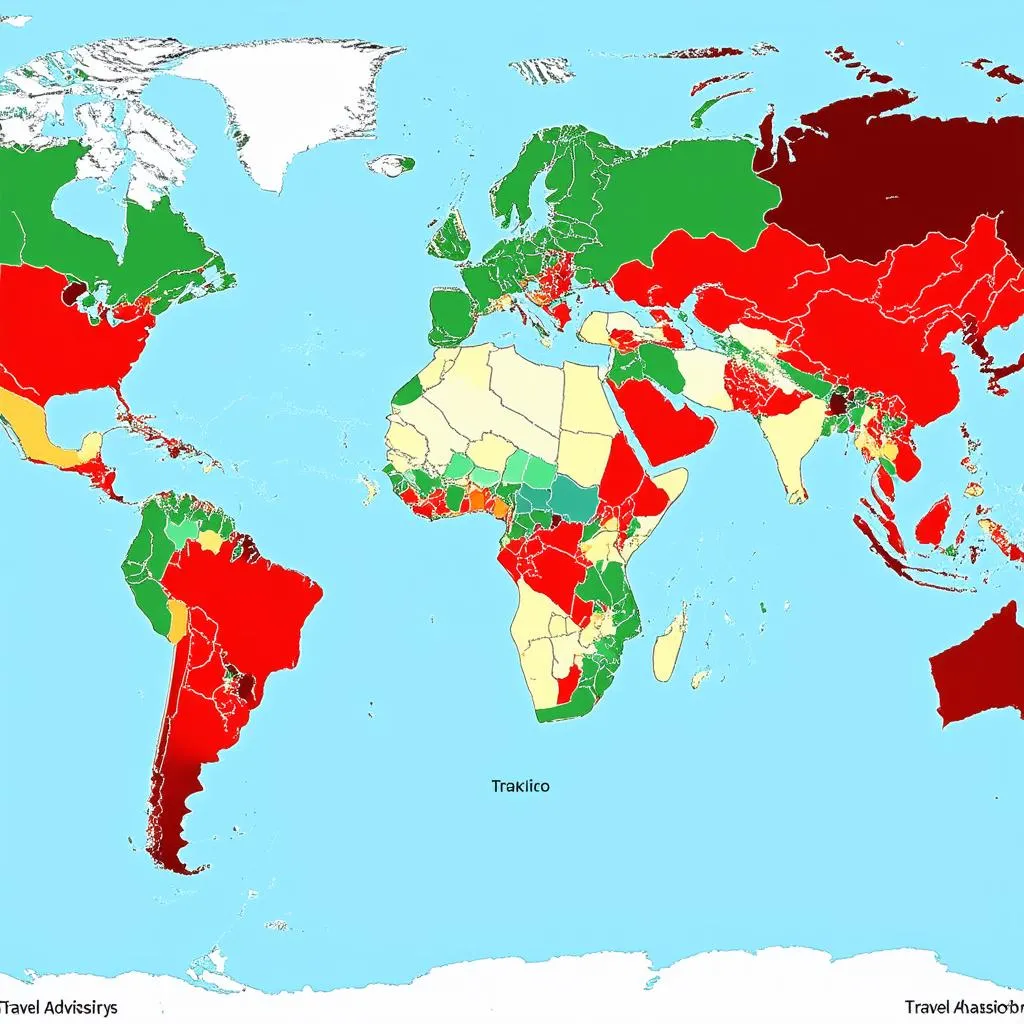Picture this: you’re all set for your dream vacation to Bali. You’ve booked your flights, secured your visa, and even found the perfect villa overlooking the rice paddies. But then, just days before your departure, you receive an alert: “A Travel Advisory Is In Effect For Your Itinerary.” Suddenly, your heart sinks. What does it mean? Is your trip ruined?
Don’t panic! A travel advisory isn’t necessarily a reason to cancel your trip. However, it does signal that you need to be extra cautious and well-informed. Let’s unpack what a travel advisory means and how it could impact your travel plans.
Understanding Travel Advisories
In simple terms, a travel advisory is an official notice issued by a government or an organization to warn travelers about potential safety or security risks in a specific region. These risks can range from political instability and natural disasters to health outbreaks and increased crime rates.
Levels of Travel Advisories
Travel advisories typically come in different levels of severity, with each level indicating the seriousness of the situation:
- Level 1: Exercise Normal Precautions: This is the lowest level, indicating that while you should always be aware of your surroundings, no specific threats are present.
- Level 2: Exercise Increased Caution: This level suggests that there are some safety and security concerns in the region. Travelers should be more vigilant and take extra precautions.
- Level 3: Reconsider Travel: This level is issued when serious risks are present, and travelers are advised to reconsider their need to travel to the region.
- Level 4: Do Not Travel: This is the highest level of advisory, issued when there’s an imminent threat to safety and security. Travelers are strongly advised not to travel to the region.
What to Do When a Travel Advisory is Issued for Your Destination
1. Research, Research, Research:
Your first step is to gather as much information as possible. Visit your government’s travel advisory website (e.g., the US Department of State’s website for US citizens) and look up your destination. Read the advisory carefully, paying attention to the specific risks identified and the recommended precautions.
2. Assess the Risks:
Not all travel advisories are created equal. A Level 2 advisory for petty theft in Barcelona calls for a different response than a Level 4 advisory for a hurricane in the Caribbean. Carefully evaluate the risks outlined in the advisory and consider how comfortable you are with them.
3. Review Your Travel Insurance:
Check your travel insurance policy to understand what it covers in case of travel disruptions due to unforeseen events, including those mentioned in a travel advisory. Some policies might offer coverage for trip cancellations, medical emergencies, or evacuations.
4. Make an Informed Decision:
Armed with the information you’ve gathered, it’s time to make a decision. Do the risks outweigh the rewards of your trip? Are you comfortable taking the necessary precautions? If you’re unsure, consider postponing your trip or choosing an alternative destination.
FAQs About Travel Advisories
1. Are travel advisories mandatory?
No, travel advisories are not legally binding. They are recommendations, not restrictions. You are ultimately responsible for your own safety and decisions.
2. Can I still travel to a country with a travel advisory in effect?
Yes, you can, but it’s crucial to understand the risks involved and take necessary precautions. Your safety should always be your top priority.
3. What are some resources for travel information besides government websites?
Several other reliable sources provide travel information, including international organizations like the World Health Organization (WHO) and travel websites like travelcar.edu.vn.
 Travel Advisory Map
Travel Advisory Map
A Traveler’s Tale: Turning a Travel Advisory into an Adventure
Jane, an avid traveler and firm believer in the power of Feng Shui, was planning a trip to Vietnam. She had meticulously planned her itinerary to include visits to ancient temples, bustling markets, and serene beaches. However, just weeks before her trip, a Level 2 travel advisory was issued for Vietnam due to political unrest in certain areas.
Instead of panicking, Jane decided to embrace the challenge. She researched alternative routes, contacted local guides recommended by travelcar.edu.vn, and even learned a few basic Vietnamese phrases. In the end, her trip was an incredible adventure filled with authentic experiences and warm encounters with the locals.
Jane’s story highlights that while travel advisories should be taken seriously, they don’t always have to spell disaster for your trip. With careful planning, flexibility, and a sense of adventure, you can turn a potential obstacle into an opportunity for a more enriching and memorable travel experience.
 Woman Exploring an Ancient Temple
Woman Exploring an Ancient Temple
In Conclusion
A travel advisory is not a reason to abandon your travel dreams. Instead, it’s a call to be informed, prepared, and adaptable. By staying informed, assessing the risks, and making well-considered decisions, you can navigate travel advisories and embark on safe and fulfilling journeys. Remember, adventure often lies just beyond our comfort zones.
For more travel tips and information, visit us at travelcar.edu.vn. We’re here to help you plan your next adventure!